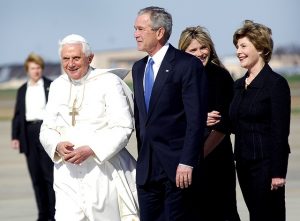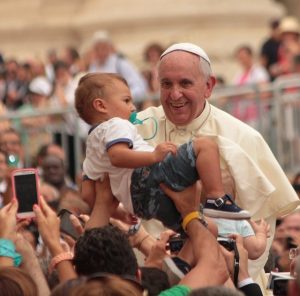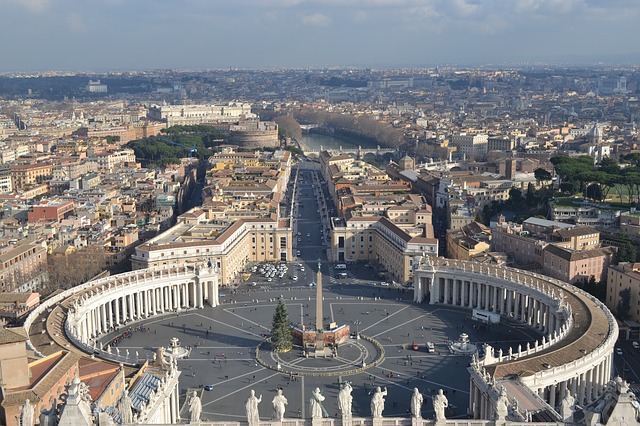Netflix’s auto play feature had been teasing me with the trailer of the movie “The Two Popes” for the longest while. It was festive season and I was pretty confident that I wanted to spend my time watching some frivolous light-hearted family drama. After a couple of good reviews about the movie from my family circle, I decided that it might actually be a good time to learn a few things about Christianity and the history of the Catholic Church, for good measure. Oh boy! Was I wrong! The deceptively overbearing presence of the two senior actors, in the posters, had me fooled.
The Two Popes: Our Verdict
Fernando Meirelles artistic chef d’oeuvre stirs up the finest of both narrative and cinematic elements to distill a remarkable cinematic experience. The Two Popes movie, in its very essence, entails the unlikely friendship between two contrasting characters who find their lives entwined at the ideological crossroads of Papal primacy, during a very tumultuous period in the history of the Catholic Church. The attempt at creating an illusion of a strange voyeuristic pleasure seem to loom large as the audience is cajoled into taking a sneak-peak into the interesting encounters between Pope Benedict XVI and his soon-to-be buddy and successor, Cardinal Jorge Bergoglio, beyond the arcane walls of the Vatican. Though the broader subject of church politics may be viewed as grossly cumbersome, this movie treads very precariously. It turns personal very quickly without meandering much through the dour fjords of ideological schisms. This movie lifts you up and seldom weighs you down. As Anthony McCarten ascertains, it is a movie about “finding the middle ground”, and it does so beautifully.
With its refreshingly buoyant script, spectacular visual aesthetics, well-tempered humour, and scintillating performances by spiritedly effervescent actors, The Two Popes movie has managed to stay with me for long. Some shots serenade you with their visual and architectural charm with white wind-swept curtains and all, dancing to the tune of the piano. Then there are other scenes that gently tug at the strings of your heart with their impassioned conversations, where the balmy exterior shots featuring the Pope’s summer residence and the recreated interiors of the Sistine Chapel silently echo the throes of the central characters. While the movie qualifies to be called a ‘feel good’ movie, it is much more than that. The plot seamlessly connects to a higher realm of the divine quality of forgiveness and ascertains the human need for liberation from sins and highlights the desire to reaffirm one’s faith in a higher power.
The Graceful Story-line
The movie’s opening scene where the booking agent disconnects Pope Francis’ phone call thinking that he is a prankster, sets the tone for the movie: warm, comforting, and not-so-sacrosanct. It’s the right amount of piquant and the very least provocative. Well, except for the harsh descent into the chronicles of Bergoglio’s grim past. These flashbacks did appear jarring but it was probably the way it was envisioned.
Let’s just say that two elderly men eventually learn to get along despite their differences and go on to become pizza sharing, soccer watching pals suggesting that the path of forgiveness and tolerance is the way forward for the Catholic Church. If the two popes can absolve each other of sins, why can’t the common man let go of his past and be more forgiving to himself! It tries to edify the audience with the history of sin and vulnerability, facile in a way, and not through the strained display of over-ambitious virtue and piety.
Is the Two Popes Movie Based on a True Story or Characters? We Say That It’s A Well Connected Medley of Novel Ideas and Historic Facts


Again, for a story line where the conflict hinges on contradicting perspectives on profound religious views, the dialogues remain spectacularly succinct bereft of pedantries or pretensions. And, precisely here lies the fundamental problem: it is all too black and white. At the crux of the script is a debate between progress and orthodoxy through the depiction of a conservative who is pitted against a progressive to the extent that it always feels like the contradiction between the two characters seem to be hyperbolically exaggerated. In the opening scene, you see a very affable Christ-like Bergoglio, then Argentine Archbishop, delivering a sermon amidst the muddle and maze of Buenos Aires. “…Repair my church”, his voice resonates through the streets. Jonathan Pryce brilliantly essays the role of Pope Francis. Bergoglio is portrayed, unreservedly, as the beacon of hope for the very troubled Roman Catholic Church and as the ideal papal candidate to forge a future for its followers. He is modest, amicable and a proponent of humility, social justice, and change. The physical resemblance is uncanny and one cannot escape Pryce’s tear-filled, guilt-ridden eyes.
Veteran actor Anthony Hopkins, on the contrary, has all the makings of a stubborn conservative, averse-to-change, condescending traditionalist with impenetrable eyes who eschewed popular culture. He is, initially, somewhat of an antagonist standing in the way of progress. In most of the scenes, you would see a very domineering and almost manipulative Pope Benedict XVI. But in reality, he is known to be modest, very affable, with a docile disposition though he was even more renowned for his vehement objection to liberalism, technology, and relativism. He is described to be “shy in demeanor but iron-fisted in his positions”. But considering that fact that the movie is described as a “biographical drama film”, experts argue that it would been more appetizing to depict Pope Benedict XVI in a more realistic light.
The story is a collage of historically relevant facts and intriguingly fanciful adaptations of the encounters between the two living popes. This leaves room for disappointment if you watched the movie for an authentic recounting of the events from recent history of the Vatican. The biographic authenticity of the movie may be obscured in its depiction of the characters. Now, if you haven’t done any bit of Vatican research, you will get through the movie feeling just fine.
The Fascinating Chemistry
At the outset, the chemistry between the characters is awkward, as the popes are unwavering in their personal beliefs. This later develops into a remorseful father and prodigal son kind of scenario. The engaging verbal scuffle between the protagonists slowly ripens to an endearingly warm camaraderie between the two characters; the veil of cynicism fades away to reveal their desire to confess and seek absolution in their spiritual journeys. It is amusing to witness how surreptitious glances of disapproval swerve into friendly banter between two trusting, easy-going mates although there is hardly any clear evidence in the movie as to why. It may very well be anything but cryptic; perhaps, it is the obvious need to connect with other human beings and the familiar struggle to reconnect with God. Or maybe, it is Providence.
About the Author:

Anju Lopez FRSA has editorial experience that spans across almost a decade in the content and media industry. She is the Co-Founder of the website – The Daily Brunch(www.thedailybrunch.com) and is a Fellow of the Royal Society of Arts, UK. She has worked as the Senior Manager for Content Development at BYJU’S. She is one of India’s most recognized Editors from the Travel and Hospitality industry. Anju holds two post-graduate degrees in Media and Communication; one from The English and Foreign Languages University and another from The London School of Economics and Political Science, UK. She is a published author and has several research papers as well as non-academic publications to her credit. In 2019, she released her first book – Speak English by Malayala Manorama publications. Anju is currently settled in Germany, where she works as a Consultant, offering her expertise to several educational institutions and media houses.
Cover Image Credits: Image by Bogdan Korneker from Pixabay




















